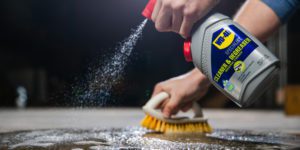What You Must Know About Adaptive Control of Resistance Welding
Brian Moore of Bosch Rexroth explains how adaptive control can help reduce losses related to poorly made resistance welds, increase resistance welding throughput and elevate your control of automated welding processes to a whole new level.
Posted: May 29, 2013
Adaptive control can help you reduce losses related to poorly made resistance welds, increase resistance welding throughput and elevate your control of automated welding processes to a whole new level.
The global automotive market is placing an increasing premium on the quality and fundamental durability of every car manufactured – not just the luxury segment, but the models in every vehicle segment need to be produced with the highest levels of precision, “fit and finish” and structural integrity to protect the vehicle’s value – and the competitive strength of the manufacturer’s brand across the globe.
To help accomplish these goals, leading-edge manufacturers are investing heavily in advanced automation platforms that offer two fundamental advantages: high-volume manufacturing of very high quality vehicles, coupled with extremely detailed control of every key process – including use of the latest-generation digital platforms that capture and track a broad range of production data.
The widespread implementation of high-speed, automated MFDC Resistance Welding in today’s automotive manufacturing platform is one significant example of this kind of investment. Robotic resistance welders provide a highly cost-effective and proven method of rapidly welding hundreds of parts per hour. To track and ensure the quality of these welds (crucial to many aspects of the vehicle’s performance and value) both destructive and ultrasonic testing of selected components is conducted in all operations.
However, one key process improvement for high-speed welding that is not yet broadly adopted – and it is one with the potential to revolutionize the quality, flexibility and productivity of welding platforms: in-process inspection and real-time adaptive control of resistance welding.
WELD PERFORMANCE
Adaptive resistance welding control utilizes cutting edge controls platforms to adjust, in real time, precise functional characteristics of the welding system so that every weld is performed within the tightest quality tolerances. It creates the framework to significantly reduce, or potentially replace ultrasonic weld inspection technology.
Typical manual ultrasonic inspection methods involve taking a sample part from the line and subjecting it to a manual, standalone inspection – as a representation of the quality of that particular welding process, during a given production run. While it is non-destructive, it is time-consuming and has the potential to introduce repeated inconsistencies, based on a tester’s opinion of what represents a good weld.
Adaptive resistance welding control integrates the inspection of each weld, and the real-time control of how each weld is performed, to vastly improve the reliability of the welding process and simultaneously maintain the highest levels of welding throughput.
For example, the PSQ 6000 adaptive welding system provides one of the most advanced platforms for real-time control of welding. During automated welding, parameters such as current, voltage and resistance are monitored once per millisecond; these parameters are constantly compared in real time against a previously established master resistance curve that controls the quality of the process.
This master resistance curve is generated through a mathematical calculation of previously captured stored current, voltage and resistance curves of known good welds. During a weld in Adaptive Control, actual values of current, voltage and resistance are compared to the master values for a good weld. The PSQ 6000 works together with the weld controllers constant current control system to automatically raise and lower the welding current and weld time in real time to keep the actual welding parameter values as close as possible to those of the master curve – with the anticipated result that the weld will have the equivalent quality.
INLINE, REAL-TIME PROCESS CORRECTION
Process control is the foundation for successful, cost-effective automation. Today’s high-speed controller technology can integrate complex data such as high speed sampling data of current voltage and resistance, process those inputs against proven performance curves and then adjust the performance of the automated production platform to prevent faults, errors or less-than-acceptable product from being created in the first place.
Adaptive resistance welding control demonstrates the value of this approach – it substitutes the time-consuming process of pulling test components during a production run, manually testing weld quality and then correcting weld schedule data (current and time) to compensate with a fully integrated solution that saves time, improves weld quality and ensures that 100 percent of all welds are inspected and their quality documented by the control system.
The adaptive welding platform measures the weld current and voltage at the electrode. Mathematical algorithms calculate resistance curves and energy balance. Data from the weld such as PSF (Process Stability Factor), UIP (Weld Quality Factor) and expolsion are stored and made available for monitoring and trend analysis. The current is then adjusted to compensate for minute differences as welding proceeds. In special circumstances, sheet combinations with different thicknesses and coatings can be welded by a single program, for special process applications, such as those using manual guns.
This kind of control also enhances welding flexibility, which helps manufacturers be more responsive to fast-changing market needs. An automated platform can store and operate multiple welding schedules, as well as change schedules much more quickly when demand for different components, body types or product changeovers have to be welded to meet sudden changes in demand.
PROCESS REPEATABILITY
Every manufacturing process is subject to variations – with resistance welding, these include:
• Part fit up
• Part thickness variations
• Misaligned electrodes
• Variations in coating materials or thickness
• Sealers
• Weld force variations
• Shunting
• Machine tooling degradation
All welding gun tips undergo wear, an elemental part of the process. Much of the weld testing regimen was developed precisely to assess how that wear is affecting weld quality, so it could be adjusted before weld quality impacts the component’s integrity.















